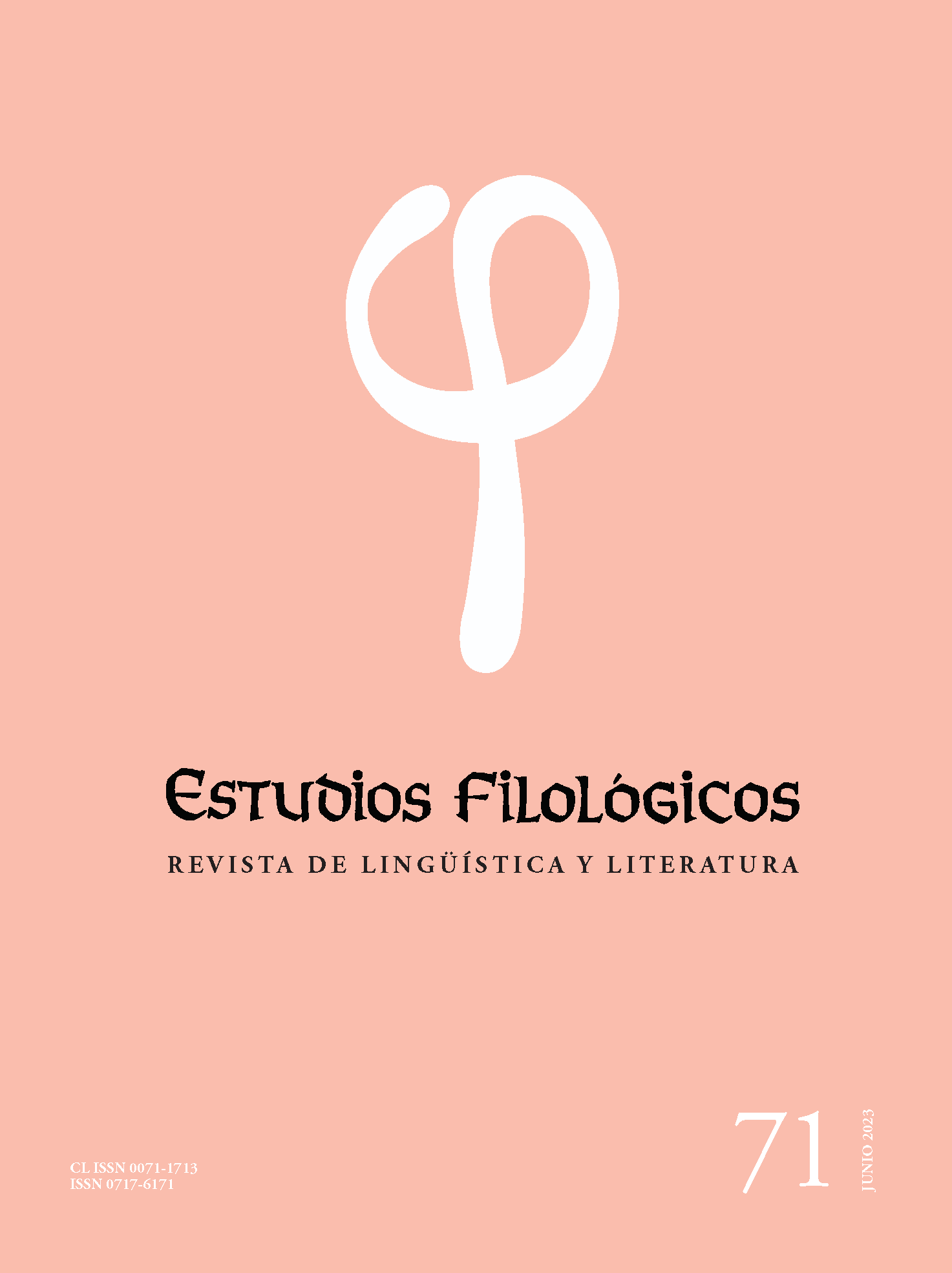Degrees of similarity between sequences of phonic segments (rhymes)
Main Article Content
Abstract
Beyond the traditional three discrete possibilities (consonancia, asonancia and disonancia), the relation of similarity between sequences of phonic segments is gradual. The distance between jefe and queje (voiceless fricatives) is less than between bacalao and astros (with four consonants added in one of the two sequences). Despite the rigid simplification in the rules, the sensitivity to different qualities of similarity is manifested in many texts, from the origins of castilian literature to traditional songs and the lyrics in contemporary pop: consonancia is appreciated, but an acceptable degree of similarity within asonancia is not rejected.
We propose a method to measure the degree of similarity through the articulatory distance of sounds and their possible combinations: we establish a mechanics to match the units and then compare them, assigning an index to the resemblance between any pair of sounds according to the distance that separates them in a table. Finally, we establish the value of the resemblance between the two sequences from the sum of the maximum possible values. We have applied this method to two rhymed texts, by Sor Juana Inés de la Cruz and Joaquín Sabina. The graphemic and phonological consonancias of the first conceal certain asonancias at the phonetic level (nasalization of vowels); the second includes a whole range of values dispersed around two possibilities, rhyme and non-rhyme.
Valuing these nuances allows to expand literary analysis and to redefine the phonetic and phonological nature of rhyme.

